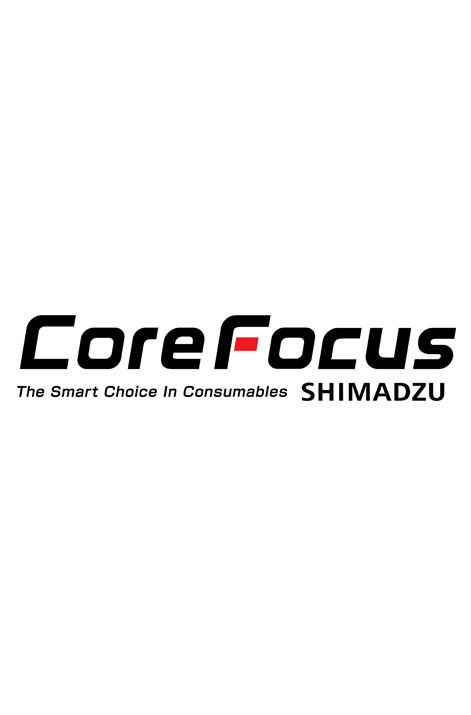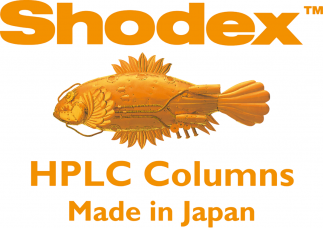Size Exclusion (GFC/GPC) columns
-
Description:
Shim-pack GPC-2000 Series are dedicated to preparative LC of tetrahydrofuran and chloroform. They ensure separation efficiency comparable to analytical columns as well as large preparative capacity.
OUT OF STOCKShim-pack GPC-2000 Series are dedicated to preparative LC of tetrahydrofuran and chloroform. They ensure separation efficiency comparable to analytical columns as well as large preparative capacity.
-
Description:
Shim-pack GPC-2000 Series are dedicated to preparative LC of tetrahydrofuran and chloroform. They ensure separation efficiency comparable to analytical columns as well as large preparative capacity.
OUT OF STOCKShim-pack GPC-2000 Series are dedicated to preparative LC of tetrahydrofuran and chloroform. They ensure separation efficiency comparable to analytical columns as well as large preparative capacity.
-
Description:
Shim-pack GPC-2000 Series are dedicated to preparative LC of tetrahydrofuran and chloroform. They ensure separation efficiency comparable to analytical columns as well as large preparative capacity.
OUT OF STOCKShim-pack GPC-2000 Series are dedicated to preparative LC of tetrahydrofuran and chloroform. They ensure separation efficiency comparable to analytical columns as well as large preparative capacity.
-
Description:
Shim-pack GPC-2000 Series are dedicated to preparative LC of tetrahydrofuran and chloroform. They ensure separation efficiency comparable to analytical columns as well as large preparative capacity.
OUT OF STOCKShim-pack GPC-2000 Series are dedicated to preparative LC of tetrahydrofuran and chloroform. They ensure separation efficiency comparable to analytical columns as well as large preparative capacity.
-
Description:
Shim-pack GPC-2000 Series are dedicated to preparative LC of tetrahydrofuran and chloroform. They ensure separation efficiency comparable to analytical columns as well as large preparative capacity.
OUT OF STOCKShim-pack GPC-2000 Series are dedicated to preparative LC of tetrahydrofuran and chloroform. They ensure separation efficiency comparable to analytical columns as well as large preparative capacity.
-
Description:
Shim-pack GPC-2000 Series are dedicated to preparative LC of tetrahydrofuran and chloroform. They ensure separation efficiency comparable to analytical columns as well as large preparative capacity.
OUT OF STOCKShim-pack GPC-2000 Series are dedicated to preparative LC of tetrahydrofuran and chloroform. They ensure separation efficiency comparable to analytical columns as well as large preparative capacity.
When Should You Use Analytical Size Exclusion Chromatography Technique?
Analytical Size Exclusion Chromatography (SEC) is the ideal technique when the separation and characterisation of biomolecules or polymers based on their size is required.
This is achieved through the use of a (GFC/GPC) column, which is particularly useful for high-resolution analysis where you want to maintain the molecule's native state. By avoiding chemical interactions, SEC allows for the accurate assessment of sample quality and the study of biomolecular properties, such as oligomerisation or aggregation, making it an essential tool in biochemical and polymer research.
Types of Size Exclusion Chromatography (SEC) Columns
Gel Permeation Chromatography (GPC) Columns
Gel Permeation Chromatography (GPC) columns are specifically designed for the measurement of molecular weight distribution of synthetic polymers. These columns use a stationary phase that is hydrophobic and a mobile phase that consists of non-aqueous (organic) solvents.
The key difference from gel filtration is its application; while gel filtration is for water-soluble molecules, GPC is tailored for organic-soluble polymers, offering a precise method for polymer analysis where an aqueous environment is unsuitable.
Gel Filtration Chromatography (GFC) Columns
Gel Filtration Chromatography (GFC) columns are used for the analysis and fractionation of water-soluble polymers and biomolecules. These columns feature a hydrophilic stationary phase and an aqueous mobile phase.
Unlike gel permeation, which targets synthetic, organic-soluble polymers, GFC is crucial for studying biological macromolecules like proteins, nucleic acids, and polysaccharides. This distinction makes GFC the go-to method for applications in biochemistry and life sciences.
Selecting the Right HPLC SEC Column
Selecting the right HPLC SEC column is crucial for obtaining accurate and reliable results. To help you with your selection process, here are some important factors to consider:
Sample Solubility
The first step in selecting a column is considering your sample's solubility. Is your sample soluble in water or an organic solvent? If your sample is water-soluble, you'll need a GFC column. If it's only soluble in organic solvents, a GPC column is the right choice.
Molecular Size Range / Pore Size
You must choose a column with a pore size that corresponds to your molecule's size. Columns with larger pores are suitable for separating large molecules, while smaller pores are better for smaller molecules. The manufacturer's calibration curve is essential for selecting the correct pore size, as it correlates molecular weight to elution volume and indicates the separation range of the column.
An incorrect pore size can lead to poor resolution and inaccurate results. Generally, the pores should be approximately two to three times larger than the largest analyte you wish to separate. For example, if you're separating an antibody sample containing aggregates (≥10 nm), monomers (5 nm), and fragments (≤5 nm), a pore size of 25 nm (250 Å) is ideal.
Separation Resolution vs. Analysis Speed
Selecting a column involves a trade-off between separation resolution and analysis speed. Longer columns or smaller particles offer better resolution but require more time. Shorter columns or larger particles provide faster analysis at the cost of some resolution.
Hence, selecting the right column requires carefully balancing your need for detailed separation with your required analysis time to optimise your workflow.
Column Chemistry Compatibility
It is vital to ensure the column's chemistry is compatible with your mobile phase and sample. Is a hydrophilic or hydrophobic column needed? Using a column that's not compatible with your mobile phase or sample can lead to column damage and inaccurate results.
Instrument Compatibility
Ensure the chosen column is compatible with your instrument. Check that your system can handle the column’s dimensions and pressure. Using a column that exceeds the instrument's pressure limits can cause irreversible damage to seals and pumps, while incorrect dimensions can lead to dead volumes, which compromise separation quality and reproducibility.
Get Size Exclusion (GFC/GPC) Columns in Singapore from Shimadzu
Shimadzu is a reliable supplier providing a wide variety of tools to assist with the chromatography process. We have all the necessary solutions, from HPLC SEC columns to HILIC columns and PLOT columns. Trust us to provide high-quality consumables that ensure precise and reliable results every time.
Frequently Asked Questions About HPLC Size Exclusion (SEC) Columns
What is the lifespan of the SEC Columns?
The lifespan of a HLPC SEC column varies depending on usage, mobile phase purity, and sample cleanliness. A well-maintained column may last for hundreds of injections or even several years.
How to extend the lifetime of SEC Columns?
To extend the lifetime of your HLPC SEC column, it is recommended to use high-purity solvents, filter your samples to remove particulates, and store the column correctly when not in use. Store the column in a sealed container with a compatible mobile phase or storage solvent to prevent the stationary phase from drying out.
How Much Sample Can I Load Onto an SEC Column?
The maximum sample load depends on the column dimensions and the concentration of your sample. Overloading the HLPC SEC column can cause a loss of resolution, which may lead to co-elution of different components, making accurate analysis and quantification impossible.









